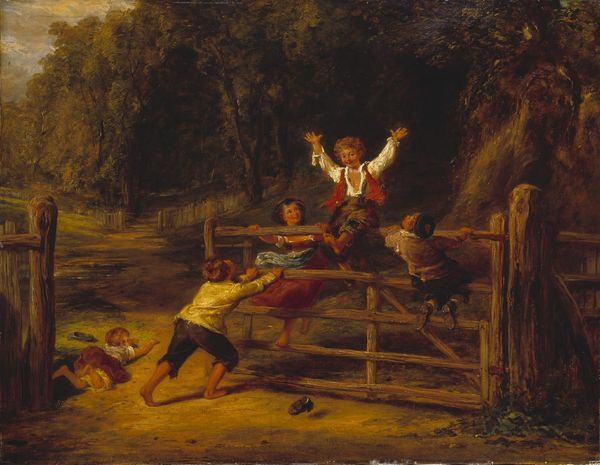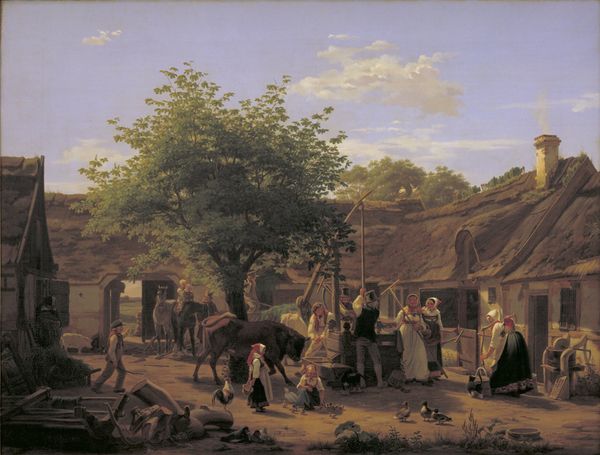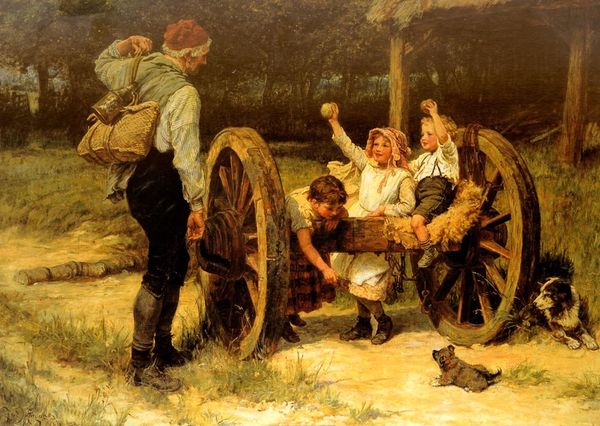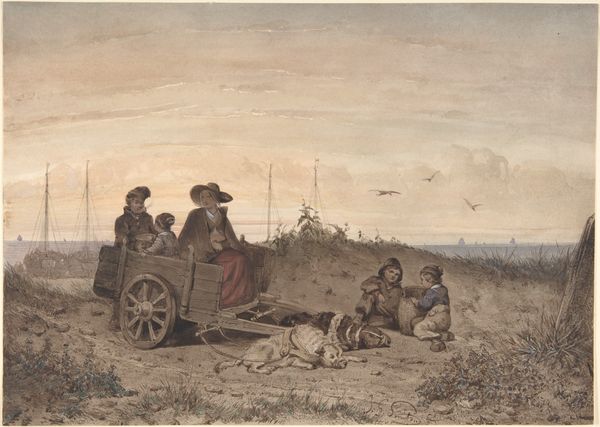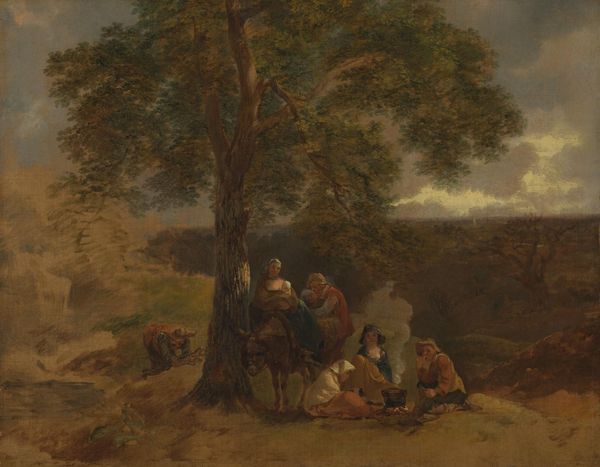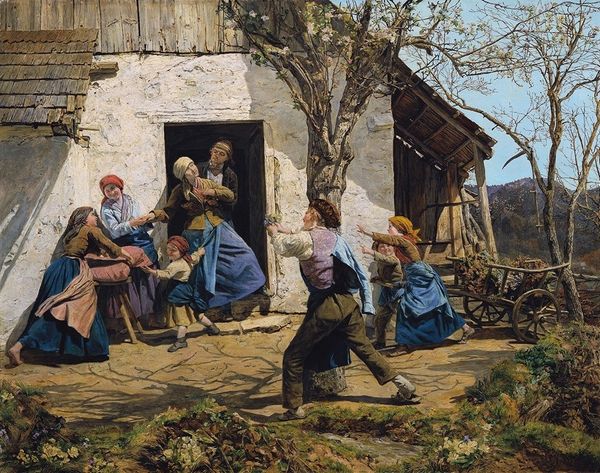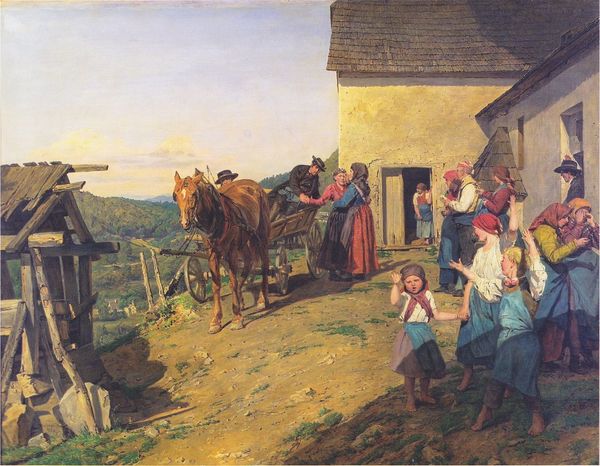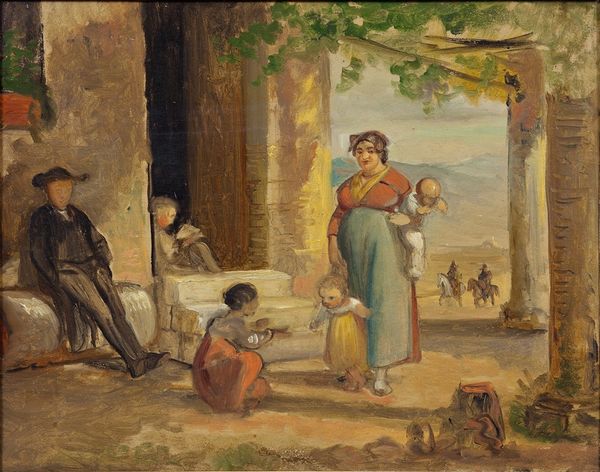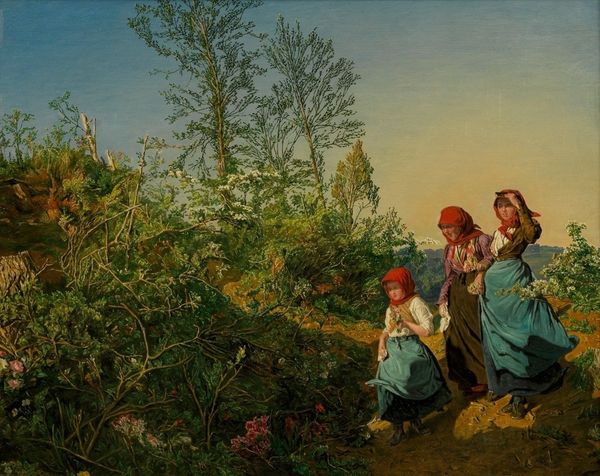
oil-paint
#
gouache
#
oil-paint
#
landscape
#
oil painting
#
romanticism
#
genre-painting
#
history-painting
Copyright: Public domain
Curator: Andreas Achenbach painted "A Driving Accident" in 1839 using oil paint. What strikes you when you first see it? Editor: There's a somber mood— a collision of classes, literally. A fancy carriage is involved in what appears to be a disaster impacting more than just the wealthy passengers. Curator: Exactly. It presents an interesting intersection of romanticism with social commentary. In this period, the rise of industrialization led to a disruption in the landscape that manifested itself through the rapid proliferation of transport. The advent of transportation not only connected people and economies; they increased fatal accidents such as this one that appear across nineteenth-century genre and history paintings. Editor: You’re spot on. Looking at the composition, the artist uses the broken fence to suggest disruption but it also frames and confines the figures involved, suggesting perhaps that this is a closed case? How are they going to transcend these societal divisions imposed on them. It evokes the political dynamics involved in what on the surface looks like an individual tragedy. What’s interesting here is that Achenbach sets this scene at dusk, almost erasing it with encroaching darkness, creating a space for potential reconstruction. Curator: Reconstruction is apt. Achenbach made sure to paint his witness from all strata, who bear different positions, each holding specific gaze to reflect the power dynamics implicit within these tragedies. In what ways can art speak to those differences? How do we create the conditions so that history does not repeat itself? It might be useful here to return to feminist philosopher Iris Marion Young, and her notion of "social connection." Editor: It almost feels that painting invites us, like a critical town crier, to bear witness and collectively contemplate, if not enact, that vision for reconstruction. The way the muted tones emphasize the subdued and reflective mood suggests a call for change. The romantic landscape contrasts sharply with the hard reality of the accident, almost as a critique. Curator: The historical narrative positions the upper classes as figures of tragedy whereas in reality the burden often, but not always, fell upon marginalized groups. Achenbach is really exploring class-based vulnerability here. Editor: So, it’s not just a snapshot of an event but a moment pregnant with implications, isn’t it? Food for thought long after we leave the gallery. Curator: Indeed, it prompts questions about societal accountability, visibility, and the construction of narrative around these events.
Comments
No comments
Be the first to comment and join the conversation on the ultimate creative platform.
